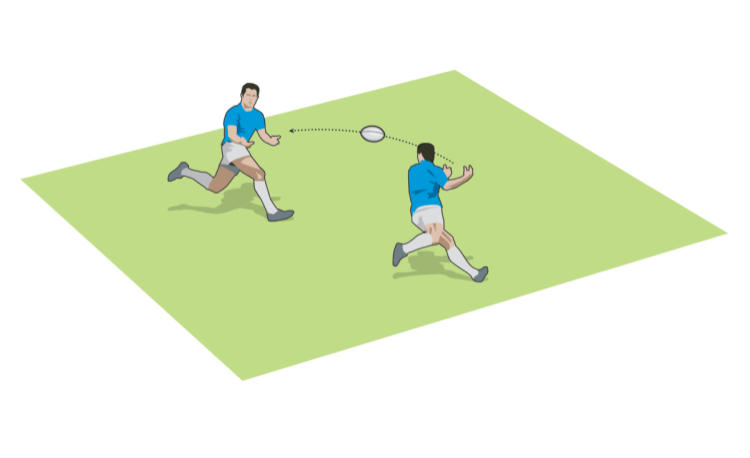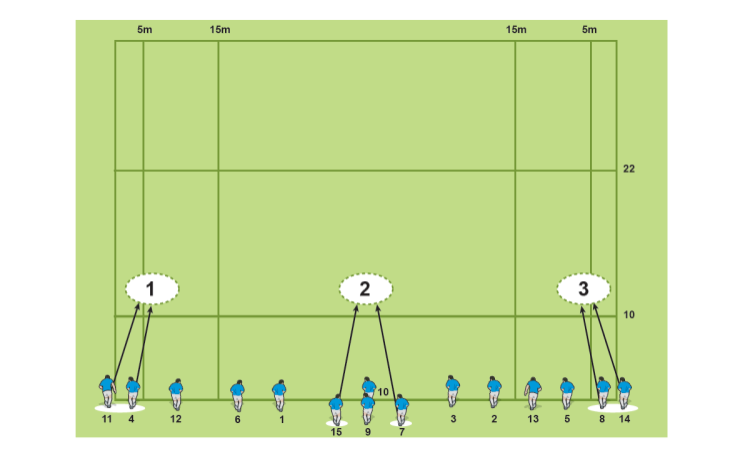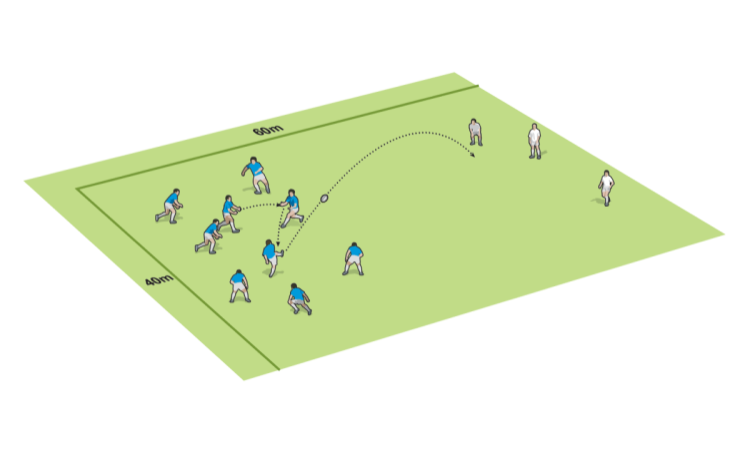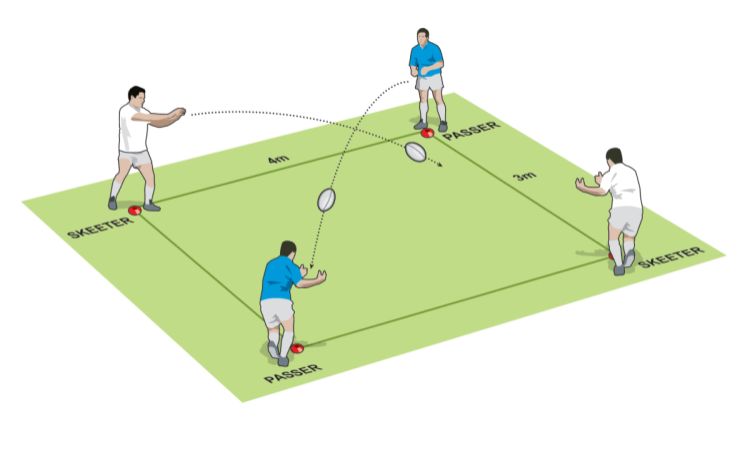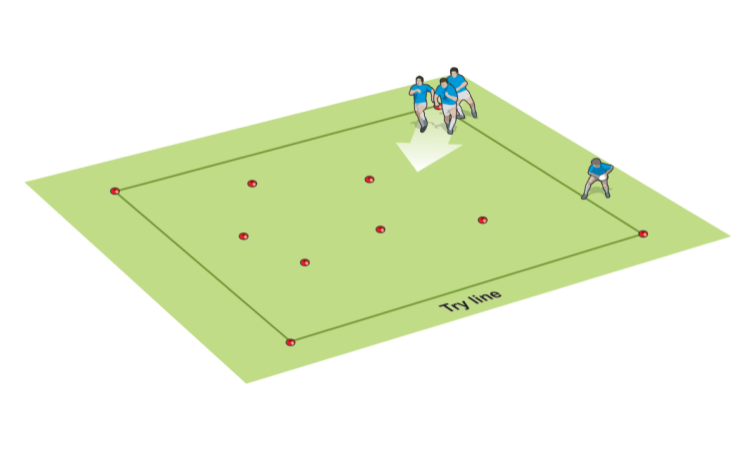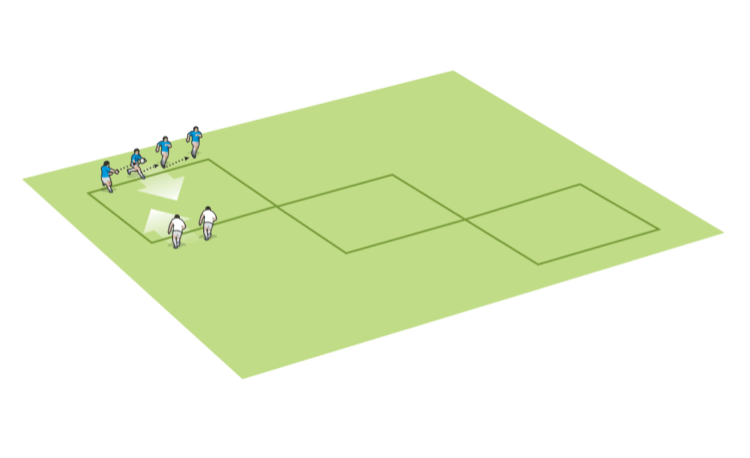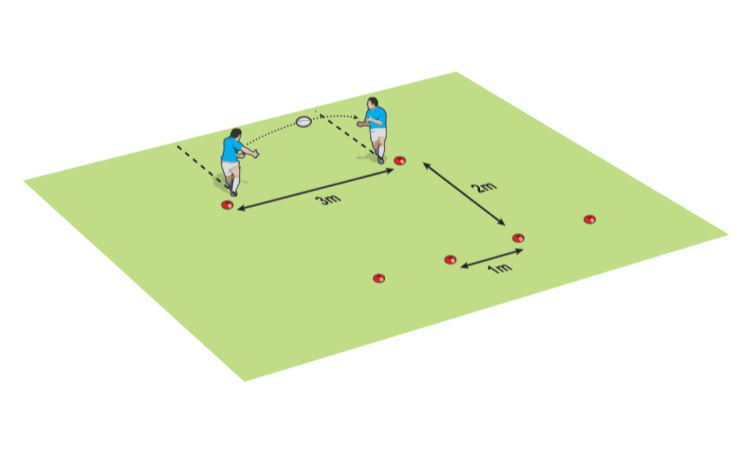You are viewing
1 of your 2 free articles
Rugby drill tips for catching passes
Tips for core catching skills
It is important to get hold of the ball in a way so that it can be manipulated quickly for the next action by the player, be it contact, offloading, passing or receiving a pass to then kick for touch. These simple tips can help you identify problems and develop drills:
- Keep your eyes on the ball all the time.
- Extend your arms, hands and fingers to receive the ball.
- Use both hands to catch the ball whenever possible.
- Keep the ball off or away from the chest when receiving it. Only bring it to the chest if taking contact.
- Do not expect the ball to go straight to hand. Be flexible enough to adjust (which follows the principle of keeping your eyes on the ball).
- Be prepared to receive a pass at any time. The ball has a nasty habit of leaping around, especially in close quarter situations.
Making catching skills even better
- Practise drills where players catch with one hand.
- Practise catching bad passes.
- Practise at pace, under pressure and in all conditions.
Catching tip: Clap hands drill
To help make your players put their hands in the right place, as well as encourage more accurate passing, try this rugby drill.
In a group of players, some of them carrying a ball, and without saying anything, look at one of the ball-carrying players. Clap your hands towards him persistently. Lo and behold, the ball will be passed to you.
In drills, encourage your players to clap their hands towards the ball carrier. The hands will then be in the right place to receive the pass.
This article is taken from the Better Rugby Coaching e-newsletter. Click here to sign up and get free rugby drills and skills twice a week.
Newsletter Sign Up
Coaches Testimonials

Gerald Kearney, Downtown Las Vegas Soccer Club

Paul Butler, Florida, USA

Rick Shields, Springboro, USA

Tony Green, Pierrefonds Titans, Quebec, Canada
Subscribe Today
Be a more effective, more successful rugby coach
In a recent survey 89% of subscribers said Rugby Coach Weekly makes them more confident, 91% said Rugby Coach Weekly makes them a more effective coach and 93% said Rugby Coach Weekly makes them more inspired.
Get Weekly Inspiration
All the latest techniques and approaches
Rugby Coach Weekly offers proven and easy to use rugby drills, coaching sessions, practice plans, small-sided games, warm-ups, training tips and advice.
We've been at the cutting edge of rugby coaching since we launched in 2005, creating resources for the grassroots youth coach, following best practice from around the world and insights from the professional game.





